REXBURG – When it comes to managing Idaho’s most abundant natural resource, Sen. Kevin Cook, R-Idaho Falls, believes water storage is a critical component that’s often overlooked.
During a seminar co-hosted by the Henrys Fork Watershed Council and the Eastern Idaho Water Rights Coalition at the Romance Theater in Rexburg Tuesday morning, the District 32 legislator highlighted numerous storage projects as a way to boost how water is managed in the Gem State.
“We send about 1.5 to 2 million acre-feet of water down the river and out into the ocean,” Cook explained. “Some of that is necessary (but let’s work to) … keep water in Idaho where we can use it.”
RELATED | Local legislator asking you to sign petition in support of water storage projects in Idaho
Cook speaks from personal experience. He recalled working on his family’s farm as a kid near Spanish Fork, Utah irrigating crops with his dad. Cook recalls setting a dam in the Spanish Fork River with planks every 10 feet.
On years when water was scarce, they’d line the planks with plastic-covered carpet to “save every little drop of water.” If there was a leak, Cook’s job was to find the hole and plug it up so water could effectively flow into the ditch.
Nearly a year after Idaho irrigators resolved a decade-long dispute about water usage and recharging the Eastern Snake Plain Aquifer, Cook wants to “plug those holes” and protect Idaho’s water supply through storage projects.
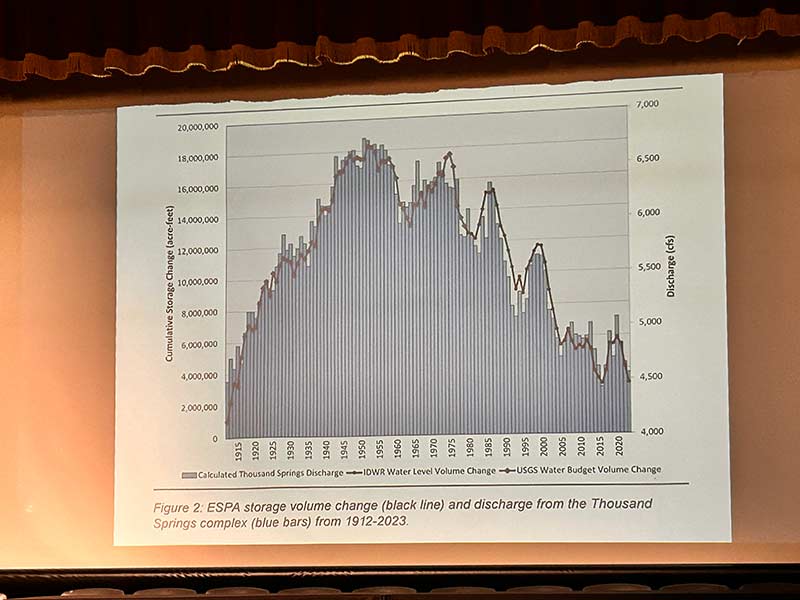
He noted the steady decline of the aquifer over many decades and the challenges farmers face in replenishing it. Among them is the increase in the number of acres that are irrigated. Based on his research, Idaho has increased from roughly 1.5 million acres of irrigated farmland in 1910 to more than 3.5 million acres in 2025.
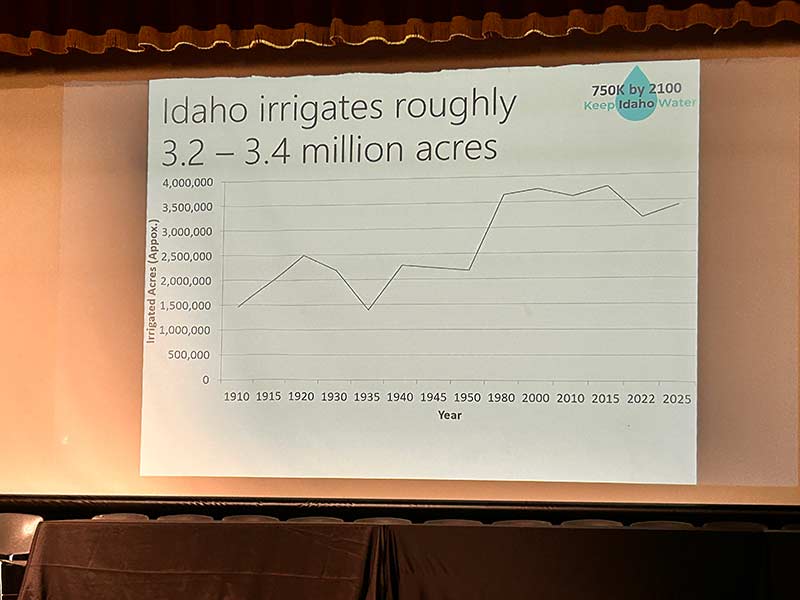
“We are starting to build our homes in the valleys of the fertile ground we used to irrigate, pushing agriculture out farther and farther and sometimes on the benches on higher elevation,” said Cook. “Last time I checked, water doesn’t flow uphill very well.”
This reality forces many farmers to rely on sprinklers, rather than flood irrigation. Sprinklers pump water out of the aquifer, but don’t replenish it.
Shrinking snowpack with warmer winters and hotter summers are other contributing factors to the aquifer’s decline.
“We know that recharge is a good thing and that it works, but we can only do recharge when we have access to excess water,” said Cook.
During Thursday’s seminar, Bingham Ground Water District Manager Alan Jackson noted that one of the stipulations of the new mitigation plan both parties agreed to last fall was that groundwater users in eastern Idaho would provide 75,000-acre-feet of water annually through 2026 to replenish the aquifer. Although farmers have fulfilled that allotment for this year, Jackson says the reservoirs will be “substantially emptied by the end of this irrigation season.”
“If we’re totally reliant on … using reservoir storage to meet that mitigation term, next year’s going to be a scary year,” Jackson said.
Securing natural flow water is a possible alternative to mitigating the shortage when storage water is not available.
Still, the lack of water storage sites in eastern Idaho is a concern that Cook wants to resolve. He highlighted six locations where new dams could be built or existing dams could be used for that purpose. Among them is a proposal to rebuild the Teton Dam, which, based on his data, is one of the most cost-effective options that would yield the most storage capacity.
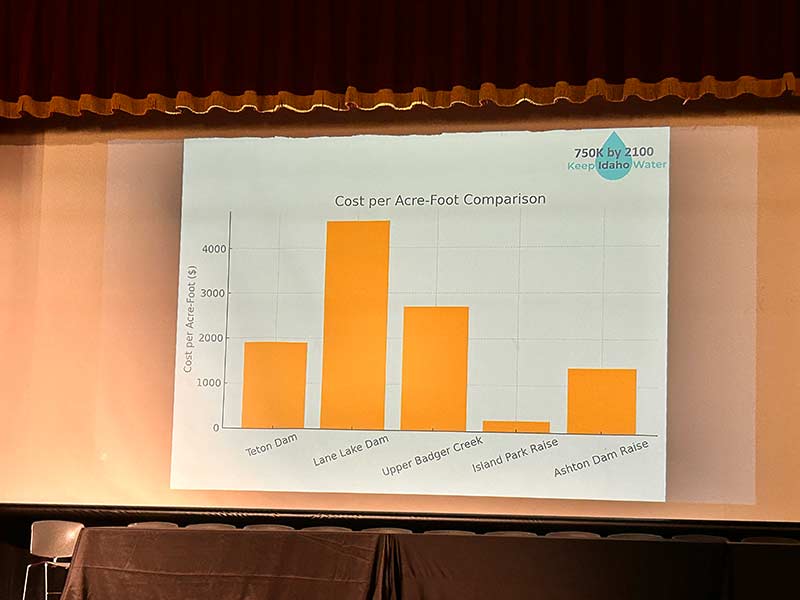
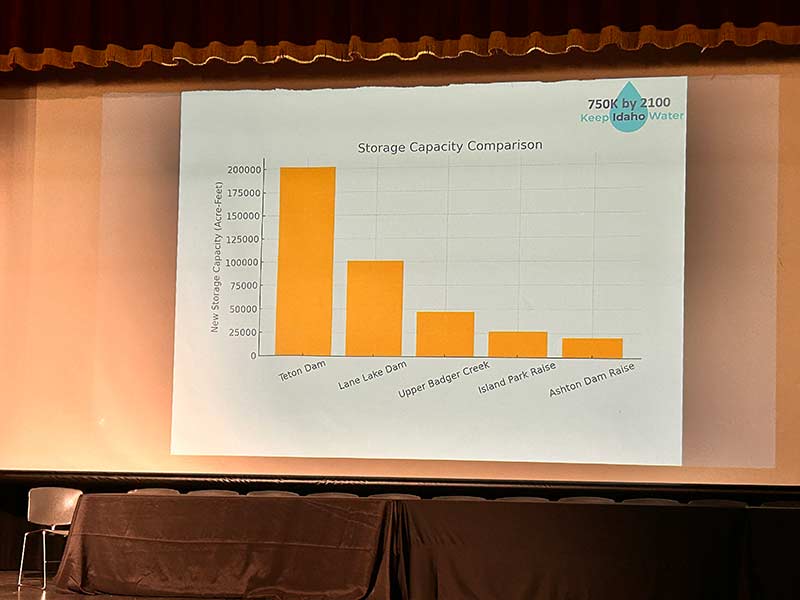
Almost 50 years after the Teton Dam collapsed, destroying homes and tens of thousands of acres of land, many have reservations about its reconstruction.
To those who feel that way, Cook cited the results of a 2015 study of the Teton Dam site conducted by the Henrys Fork Basin and the Idaho Water Resources Board.
“While local water users recognize there are significant environmental and social issues with the Teton Dam alternative … they also note that the development of this reservoir could be valuable,” the entities wrote. “Water users and the state support retaining this option for future study should the water supply outlook change over the course of time.”
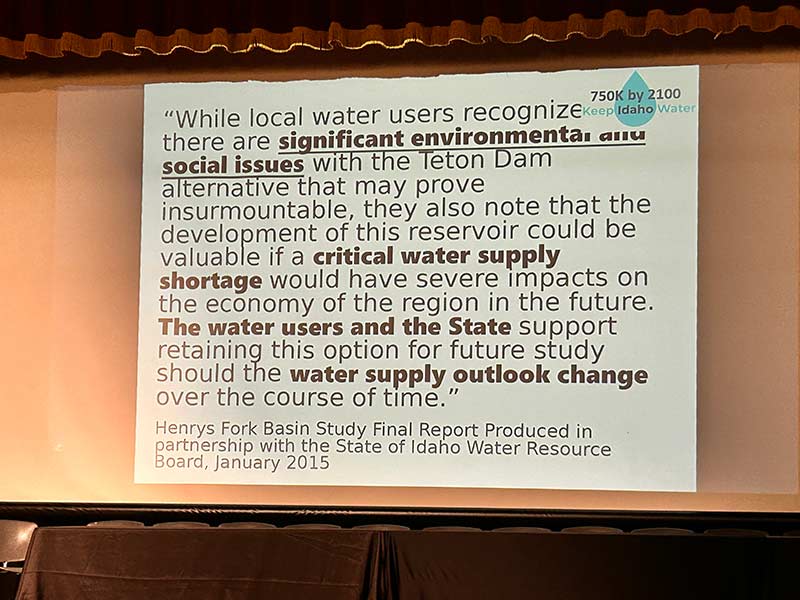
Cook also noted that technology has changed since then and there are options to consider during construction that would prevent a future disaster.
“I’m not telling you to go and build the Teton Dam no matter what,” Cook said. “But I am saying go study it and look at it and do it safe.”
Other potential sites Cook mentioned include the Ashton Dam, Lane Lake Dam, Upper Badger Creek Dam, Spring Creek Dam and Moody Creek Dam.
“Don’t discount the smaller (projects). They all add up and they all work together in our (river) system,” Cook told those in attendance.
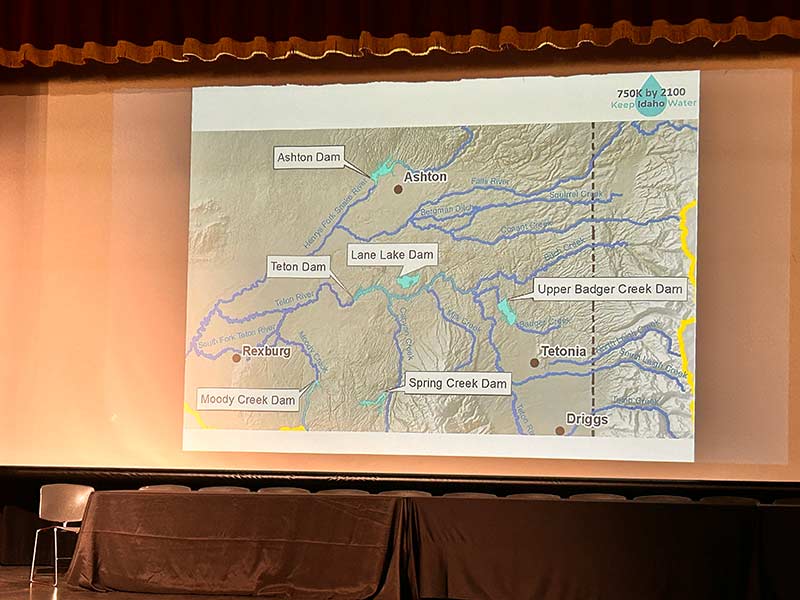
In June, he launched a petition in hopes of getting the attention of Idaho’s Congressional delegates and securing federal funding for a storage project within the next 10 years. He’s calling on anyone who supports water storage efforts to sign the petition. If he gets the required 67,000 signatures, he’s planning to personally deliver it to Washington this fall.
In this endeavor, Cook reminded those in attendance that water storage isn’t just a solution for today’s water issues. It’s a longterm problem that needs to be addressed for future generations.
One of his longterm goals is to “fill the pipeline” with planned storage projects through the year 2100.
“Many of us may not be here by then,” Cook said, noting that the city of American Falls moved the town to higher ground in the 1920s to accommodate the construction of the American Falls Dam.
RELATED | American Falls celebrates 100 years since its historic move
“They moved it up the side of the mountain to make room for a 1.1 million acre-foot reservoir,” Cook added. “They were not looking down the road three years or five years, they were looking to the future. They were looking toward us so that we would have water.”
“We’re going to kick the can down the road farther because we’re going to give future generations water,” he said.
RELATED | How Idaho’s 12th governor helped enhance one of the area’s primary water sources
=htmlentities(get_the_title())?>%0D%0A%0D%0A=get_permalink()?>%0D%0A%0D%0A=htmlentities(‘For more stories like this one, be sure to visit https://www.eastidahonews.com/ for all of the latest news, community events and more.’)?>&subject=Check%20out%20this%20story%20from%20EastIdahoNews” class=”fa-stack jDialog”>





